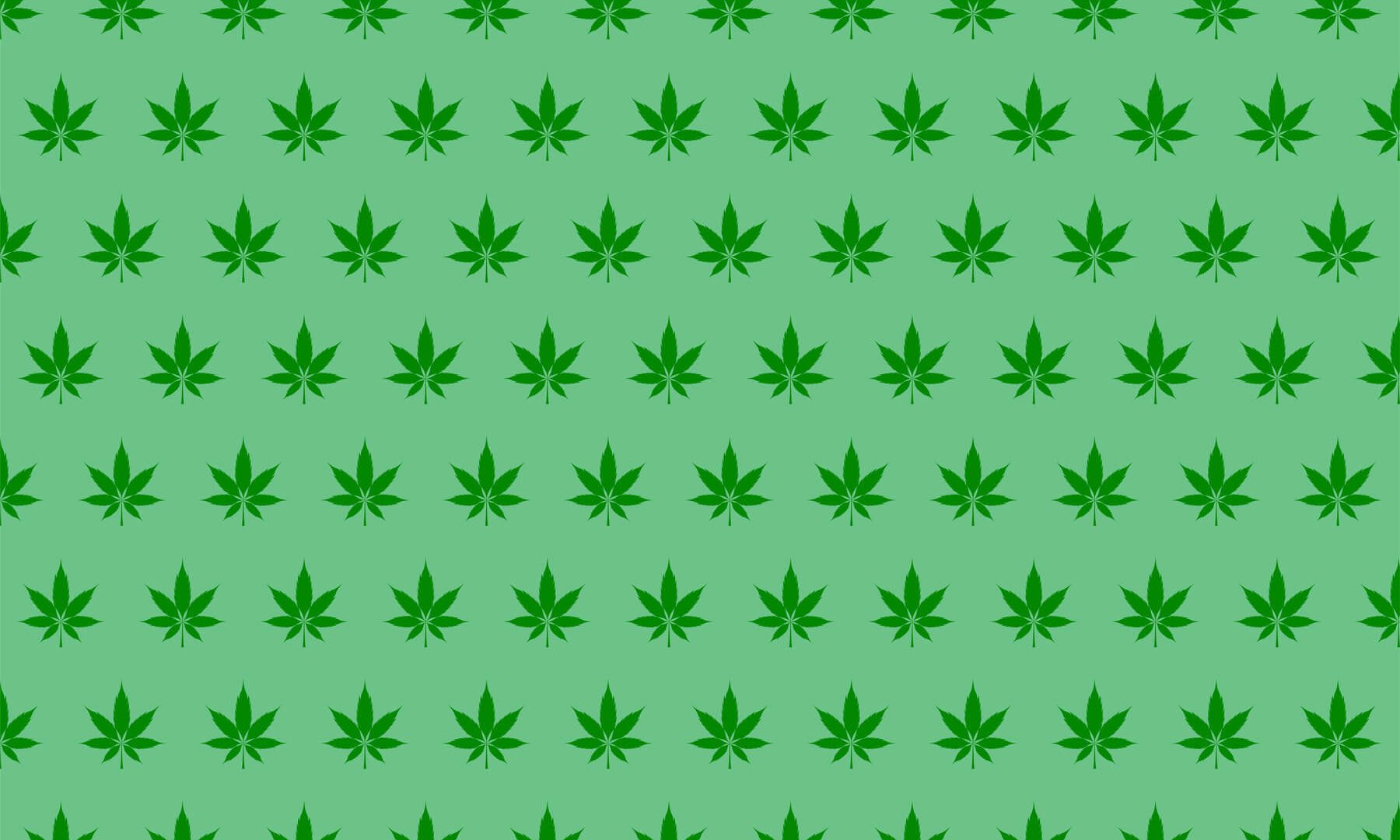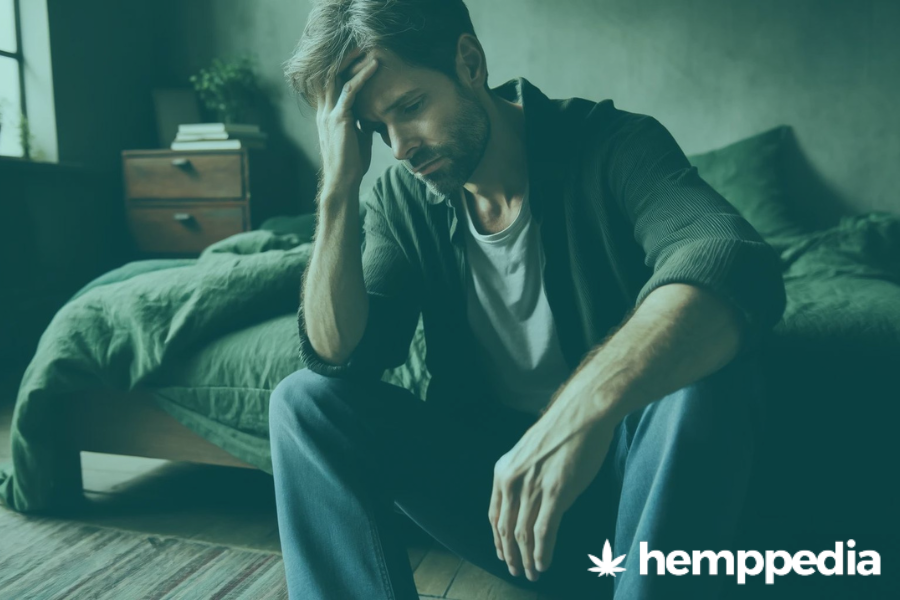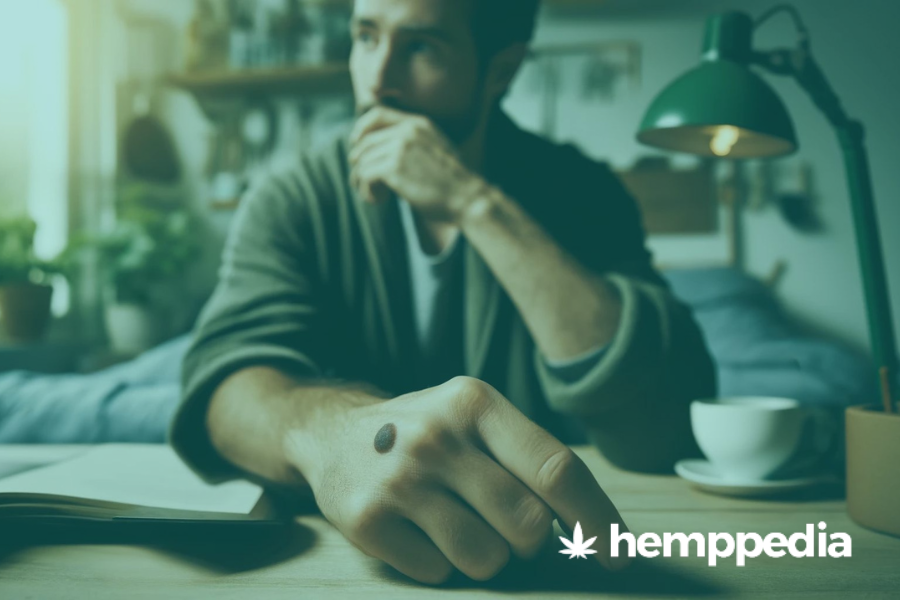Introduction
Erectile dysfunction, ED, in short, is a common sexual problem that affects most men’s mental and physical health. Does the therapeutic properties of CBD oil help in treating ED? How to use CBD oil? Let us discuss.
Undoubtedly, there is an increase in demand, supply, and reputation for CBD products for their extensive application in managing several conditions. But, when it comes to erectile dysfunction, most men feel embarrassed to talk about it. In such a case, can the therapeutic potential of cannabis-based CBD products help treat symptoms of ED? Although we have discussed the multiple therapeutic benefits of cannabinoids, it is indispensable to understand the nature of any disorder so that assessing the remedial role of CBD could be more effective, in this case, erectile dysfunction.
Erectile Dysfunction: Top Health Concern
Several websites, blog posts, and social media references point out that as many as 30 million men from different age groups are affected by ED. Although this may be true, our Hemppedia editorial team wanted to look at data about ED from a different perspective.
Although ED is a common cause of concern in men’s health, not many people know it is treatable.
Did you know that during the forecast period 2019-2025, the global erectile dysfunction drugs (Viagra, Tadalafil, Alpostadil cream, and more) market size is valued at USD 2930 million in 2025? Expected to register a Compound Annual Growth Rate (CAGR) of 3.5%.
These numbers seem more alarming than the incidence of ED. Is the data an outcome of the marketing effect of erectile dysfunction drugs, or does it indicate that more population is susceptible to ED?
When it comes to male health, among the top 10 most concerning conditions, depression, diabetes, and alcohol addiction occupy prominent positions. Although these are comorbidities, they are fundamental factors that lead to erectile dysfunction. Moreover, this condition is often multi-factorial, meaning one or more causes lead to this debilitating situation.
Let us understand further.
What is erectile dysfunction?
The National Institutes of Health Consensus Conference has defined erectile dysfunction (ED) as “a consistent inability to attain or maintain a penile erection, or both, sufficient for adequate sexual relations”.
Some people refer to ED as impotent, but not an often-used term by healthcare professionals.
Types of sexual dysfunction
A 2004 study1 points out five types of sexual dysfunctions affecting men.
- Low libido (sexual interest)
- Erectile dysfunction(ED)
- Premature ejaculation (reaching orgasm too quickly)
- Delayed or inhibited orgasm
- Physical abnormalities of the penis
Although there are correlations between these types, this article aims to discuss ED in detail. Equally important, to analyze the potential benefits of CBD oil for managing symptoms of ED.

Causes of erectile dysfunction
A 2017 study2 reports that ED is a natural part of aging. Its occurrence increases with age coupled with testosterone (androgen) deficiency. A decrease in testosterone causes a decrease in erections, diminishing the blood supply to the penis. Consequently, the penis fails to create rigid erections. Hence, ED not only affects sex life but also could indicate undiagnosed coronary artery diseases(CAD) and diabetes mellitus.
References from the 2016 ED study3 and a 2018 study4 report on the causes of ED. They are presented in a simplified tabular form as given below.
1. ORGANIC CAUSES
| Endocrine factors | Non-endocrine factors |
| Reduced serum testosterone levels | Vasculogenic: affecting blood supply, clogged arteries. For eg: Hypertension, high blood pressure, cigarette smoking |
| Hormonal imbalances, sexual function, reproduction, sleep, mood, anger | Neurogenic: abnormalities in neural relations. For eg: spinal cord injury, multiple sclerosis, Parkinson’s disease, lumbar disc disease, traumatic brain injury, etc |
| Metabolic disorders, poorly controlled Diabetes mellitus | Iatrogenic: medical or surgical treatment for a pelvic fracture or pelvic surgery |
| Tissue disorders | Kidney diseases, prostate enlargement, urinary tract infection |
2. NON-ORGANIC CAUSES
| Psychogenic factors | Confounding factors |
| Adrenaline mediated ED. | Alcohol consumption |
| Stress, depression, and anxiety together defined as heightened anxiety. | Periodontal diseases, oral health |
| avoidance of sex due to performance anxiety, lack of sexual desire, loss of self-esteem, deteriorated quality of life. | Medications used to treat ED, anti-ulcer drugs, opiates, hypertension drugs, tricyclic antidepressants, selective serotonin reuptake inhibitors, benzodiazepines,etc |
| Psychiatric symptoms, personality disorders, social anxiety disorder and schizophrenia | Lack of physical activity leading to hyperlipidemia |
Summing up from the above two tables, we have understood that ED is a multifactorial condition. A combination of organic, non-organic, and lifestyle-led factors contribute to the development of the disorder.
More key takeaways from the 2016 ED study3:
- There is a strong correlation between ED and lower urinary tract symptoms (LUTS) in men with mild benign prostatic hyperplasia (BPH) or prostate gland enlargement.
- Erectile dysfunction generally precedes cardiovascular conditions. Therefore, it can be used as an early indicator to ascertain major cardiovascular problems.
- Tobacco smoking addictions increase the risk of ED as smoking has a direct impact on ED.
Key takeaways from the 2017 study5:
- Vascular diseases are the most common causes of ED, but the exact pathway is still unknown.
- There is a link between chronic periodontitis (CP) and ED because both diseases share common risk factors and lead to endothelial dysfunction. Therefore men with mild to severe ED showed a higher prevalence of CP.
(Chronic periodontitis is a common oral cavity disease that causes chronic inflammation of the periodontal tissues and accumulation of dental plaque)
Additionally, research suggests that ED can begin due to an injury to the penis from sports or accident, autoimmune diseases, Peyronie’s disease, medical or family history, etc. These impact sexual health, sexual disorders, or painful sex.
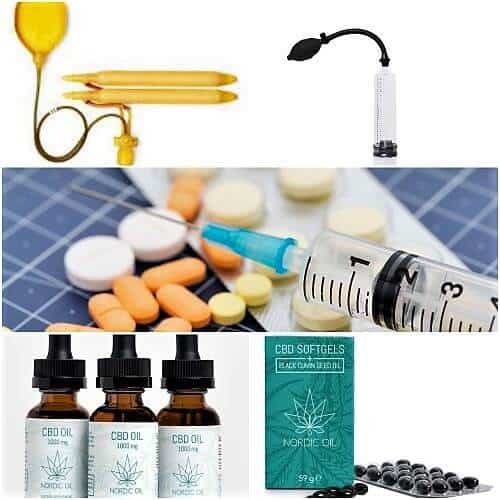
How to treat ED?
There are several treatment options available to treat ED. If you seek timely professional medical advice, you can improve your sex life and overall well-being.
A 2014 study6 points out that reports of ED date back to 2000 BC.
The 2016 study3 reports that since the 15th-century, interest in this subject and its remedies have remained constant.
Therefore we can say that modern advanced treatments for ED have drawn inspiration and guidance from conventional remedies.
Let us briefly look at some of the current remedies in practice to treat erectile dysfunction.
- Oral prescription medications
- Penile Implantable Devices
- Surgery ( Artery reconstruction)
- Injectable medicines & Suppositories
- Alternative medicines, Dietary supplements, Botanical drugs from plants & herbs
Oral prescription drugs:
Oral drugs such as sildenafil, tadalafil, and vardenafil are PDE5 inhibitors. They help relax penile tissues and stimulate sexual arousal leading to enhanced sexual performance or longer-lasting sex. Phosphodiesterase 5 (PDE5) helps increase blood flow to the penis by relaxing the blood vessels.
From a 2013 study7 we can understand that PDE5 is an enzyme found in the penis and the clitoris, smooth vascular, bladder and prostate muscles, and platelets.
Research suggests that complete care must be taken into account while treating erectile dysfunction patients. Especially examining their other health problems, history, and psychological examinations, accompanied by constant follow-ups. Because, unlike natural supplements, these prescription drugs do present side effects.
For example, the 2005 study8 reports that although sildenafil is safe in men with coronary heart disease, and not to be used with nitrates. And side effects include headache, flushing, and dyspepsia.
Implantable devices or prostheses:
Implantable devices or prostheses are physical objects, usually one to a three-piece device.
The device gets placed inside the penis through a surgical procedure. Post recovery from surgery, the patient could control his erection with the help of the implant.
External Devices such as vacuum erection devices help achieve an erection. Here, the penis is inserted through a plastic cylindrical vacuum pipe to pull blood into the penis. An elastic ring is placed at the base of the penis to prevent blood from flowing back to the body.
Artery reconstruction:
The physiological process of erection involves the brain, nervous and vascular systems. The process begins with the brain that sends arousal signals to the penile nerves transmitting the same to the spinal cord and penis to cause an erection. When the nerve impulse reaches the two erection chambers inside the penis(corpora cavernosa), it relaxes the penile tissue, and the blood vessels in the chambers get filled with blood. Subsequently, the penis swell in size traps the blood and makes it hard and erect.
Arterial surgery is a remedy to help erectile function normally by removing blockages in penile chambers and create better blood flow.
A 2013 study9 reports that penile vascular reconstructive surgery should be a promising option in the near future provided it is handled cautiously with appropriate surgical methods.
Injectable medicines and suppositories:
Injectable medicines trigger automatic erections, unlike oral medications.
For example, Alprostadil is injected into the penis and as a urethral suppository.
Suppositories are pills specially designed for administering certain medications through anal or vaginal cavities. They are generally in a cone or oval shape that contains the medicine.
New advancements in treating ED
The 2014 study10 elaborately discussed new technological advancements in ED management. Such as external penile support devices, vibrators, low-intensity extracorporeal shockwave, impulse magnetic field therapy, tissue engineering, nanotechnology, endovascular treatment, and new penile implants
Alternative medicines:
More and more people are turning to non-mainstream approaches to health care, which are outside western practices. They include alternative contemporary medicines and Integrative therapies.
Alternative medicines include herbal products, nutraceutical products, dietary supplements, and probiotics available as tablets, powder, syrup, capsules, teas, and extracts. The global complementary and alternative medicine market size is valued at USD 82.27 billion in 2020 and is expected to expand at a compound annual growth rate (CAGR) of 22.03% from 2021 to 2028.
A recent study11 reports that the FDA is developing a framework under which CBD-containing products could be labeled as dietary supplements, supported by expanded research, a corporate stewardship program, and a rigorous adverse event reporting system.
Does CBD help treat symptoms of erectile dysfunction?
Well, we might not always get direct answers to what we seek.
We are aware that research is inadequate in several areas of medical cannabis and its pharmacological aspects.
But, Hemppedia has compiled several blog posts about the various therapeutic aspects of cannabidiol CBD, the non-psychoactive compound of the cannabis sativa plant. Moreover, we have also discussed other cannabinoids (CBG, acidic forms, THCA, THC, CBDA) and their potential health benefits in managing mental, neurological, pain, and inflammatory conditions and a lot more.
So, let us try to connect some dots and explore the role of cannabinoids in improving the quality of life for men affected with ED.
In this blog post, we discussed the symptoms of endocrine, non-endocrine, psychogenic, and compounding factors that lead to erectile dysfunction.
The 2018 study12 confirmed that endogenous cannabinoids have a role in regulating food intake and energy homeostasis of the body, and have a significant impact on the endocrine system, including the activity of the pituitary gland, adrenal cortex, thyroid gland, pancreas, and gonads. This establishes the interrelations between the endocannabinoid system (ECS) and the endocrine system and could be a potential target for proving the therapeutic benefits of several drugs in the treatment of infertility, obesity, diabetes, and prevention of cardiovascular diseases.
Let us once again recall the neurogenic causes of ED.
| Neurogenic- abnormalities in neural relations. For eg: spinal cord injury, multiple sclerosis, parkinson’s disease, lumbar disc disease, traumatic brain injury, etc |
- In the blog post, CBD for Multiple Sclerosis, we had pointed out the benefits of using CBD to treat symptoms of Multiple Sclerosis to improve the quality of life of most patients.
A study published in 201313 in the journal “Neurobiology of Disease” addresses this topic. It confirms cannabidiol (CBD) long-lasting protection against harmful effects of inflammation in a viral model of multiple sclerosis.
- CBD blocks a receptor known as GPR6 that is known to cause some impaired movements in a patient with Parkinson’s. Another study showed positive results and improved the quality of life of affected patients without any other psychiatric disorder.
- CBD for sports blog post brings out references from studies that analyzed the use of cannabis and CBD for high-risk sports professionals. The role of CBD in decreased inflammatory cell activation, improvements in mood for traumatic brain injury, concussions, and pain management is noteworthy here.
- CBD can stimulate the growth of the hippocampus, thereby triggering the creation of new neurons. Neurogenesis can be a powerful method to reduce the symptoms of anxiety disorders and depression. Moreover, cannabis and its components help alleviate depression and stabilize moods (induced by chronic stress) by activating paralimbic and limbic areas in the patient’s brain. CBD has a role in modulating serotonin levels and promoting restful sleep.
- CBD for Enlarged Prostate (Benign Prostatic Hyperplasia): BPH is a condition of an enlarged prostate, not necessarily cancer. Symptoms like painful urination, pain in the hips and pelvic area, blood in the urine or semen, painful ejaculation, and frequent urination show up. Urinary tract infection (UTI), kidney stones, and increased testosterone production could also lead to BPH.
Let us quickly understand some terms here. Testosterone is the male sex hormone that regulates sex drive or libido, bone and muscle mass, fat, red blood cells, and sperm production. And, Leydig cells present in the seminiferous tubules in the testicle are responsible for producing testosterone, the male sex hormone.
Therefore, the role of CBD in inhibiting testosterone is noteworthy. A 1979 study14 reported that cannabinoids at very low concentrations may interfere directly in Leydig cells with both protein and testosterone synthesis, and thus with their function.
- Having discussed the role of CBD, a few points about THC are mention-worthy.
Two hormones are essential for reproduction ( both male and female): Luteinizing hormone (LH) and follicle-stimulating hormone (FSH). These get secreted from the pituitary gland called gonadotrophs.
A 1984 study15 reports that THC lowers the LH and FSH, which are responsible for reduced testosterone production by the Leydig cells of the testis. Moreover, THC suppresses prolactin, thyroid gland function, and growth hormone while elevating adrenal cortical steroids.
In essence, we have understood that sex is more than a physical relationship. Homeostasis of the mind and body together play a crucial role in sexual health and vice versa.
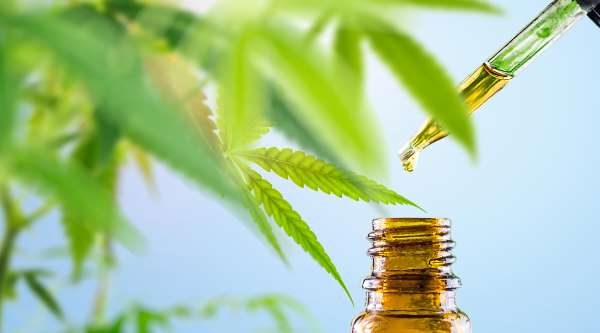
How to use CBD oil for erectile dysfunction?
The exact manner in which CBD oil for erectile dysfunction works is not yet fully understood. Unlike THC, CBD is not psychoactive and does not make you high. But the calming and relaxing properties of CBD regulates mood, stress, and performance anxiety leading to the possibility of boosting libido.
There are only tertiary references about the use of cannabis-derived CBD products, including CBD oil, capsules, concentrates, CBD edibles, CBD lube, or lubricants for managing pain, discomforts in ED.
Since there are different formulations of CBD, the best and the easiest choice is CBD oil. CBD oil comes in different strengths and potencies. Most importantly, in the context of ED, since we have discussed the negative effects of THC in male hormone function, make sure to procure high-quality CBD products that are THC-free.
- The best route of oral administration is sublingual.
- Take a few drops under your tongue, wait for a couple of seconds until the oil gets rapidly absorbed as this route avoids the first pass.
- Keep the dosage to a minimum for 3-4 weeks, take a week of break, and continue the dosage. This method of administration could help you establish an understanding of your body chemistry.
TL; DR
- Erectile dysfunction affects over 150 million men worldwide, reports studies.
- ED is not only a result of aging but a consequence of an underlying physical problem.
- Excessive alcohol consumption, tobacco use, cannabis smoking cause erectile dysfunction.
- ED is treatable as long as men become more vocal about it and consult a urologist to discuss their sexual health.
- The Massachusetts Male Aging Study (MMAS) found the probability of severe depression in men affected with ED to be approximately 90%.
- Obesity, diabetes, high blood pressure, cardiovascular disorders could lead to ED.
- Maintaining a healthy active lifestyle, adopting a Mediterranean diet and ample sleep could go a long way in managing overall health.
- CBD oil can give you an overall calming effect prompting your mind to relax and detach from stress and anxiety.
References
- Parmet S, Lynm C, Glass RM. Male Sexual Dysfunction. JAMA. 2004;291(24):3076. doi:10.1001/jama.291.24.3076 [↩]
- Mobley DF, Khera M, Baum N. Recent advances in the treatment of erectile dysfunctionPostgraduate Medical Journal 2017;93:679-685 [↩]
- Yafi FA, Jenkins L, Albersen M, et al. Erectile dysfunction Nat Rev Dis Primers. 2016;2:16003. Published 2016 Feb 4. doi:10.1038/nrdp.2016.3 [↩] [↩] [↩]
- Kellesarian SV, Kellesarian TV, Ros Malignaggi V, et al. Association Between Periodontal Disease and Erectile Dysfunction: A Systematic Review. Am J Mens Health. 2018;12(2):338-346. doi:10.1177/1557988316639050 [↩]
- Singh VP, Nettemu SK, Nettem S, Hosadurga R, Nayak SU. Oral Health and Erectile Dysfunction. J Hum Reprod Sci. 2017;10(3):162-166. doi:10.4103/jhrs.JHRS_87_17 [↩]
- Stein MJ, Lin H, Wang R. New advances in erectile technology. Ther Adv Urol. 2014;6(1):15-24. doi:10.1177/1756287213505670 [↩]
- Huang SA, Lie JD. Phosphodiesterase-5 (PDE5) Inhibitors In the Management of Erectile Dysfunction. P T. 2013;38(7):407-419 [↩]
- Doggrell SA. Comparison of clinical trials with sildenafil, vardenafil and tadalafil in erectile dysfunction. Expert Opin Pharmacother. 2005;6(1):75-84. doi:10.1517/14656566.6.1.75 [↩]
- Molodysky E, Liu SP, Huang SJ, Hsu GL. Penile vascular surgery for treating erectile dysfunction: Current role and future direction. Arab J Urol. 2013;11(3):254-266. doi:10.1016/j.aju.2013.05.001 [↩]
- Stein MJ, Lin H, Wang R. New advances in erectile technology. Ther Adv Urol. 2014;6(1):15-24. doi:10.1177/1756287213505670 [↩]
- Walker LA, Koturbash I, Kingston R, ElSohly MA, Yates CR, Gurley BJ, Khan I. Cannabidiol (CBD) in Dietary Supplements: Perspectives on Science, Safety, and Potential Regulatory Approaches. J Diet Suppl. 2020;17(5):493-502. doi: 10.1080/19390211.2020.1777244. Epub 2020 Jun 16. PMID: 32543246 [↩]
- Borowska M, Czarnywojtek A, Sawicka-Gutaj N, Woliński K, Płazińska MT, Mikołajczak P, Ruchała M. The effects of cannabinoids on the endocrine system. Endokrynol Pol. 2018;69(6):705-719. doi: 10.5603/EP.a2018.0072. PMID: 30618031 [↩]
- Mecha, M., et al. „Cannabidiol provides long-lasting protection against the deleterious effects of inflammation in a viral model of multiple sclerosis: a role for A2A receptors.“ Neurobiology of disease 59 (2013): 141-150 [↩]
- Jakubovic A, McGeer EG, McGeer PL. Effects of cannabinoids on testosterone and protein synthesis in rat testis Leydig cells in vitro. Mol Cell Endocrinol. 1979;15(1):41-50. doi:10.1016/0303-7207(79)90069-8 [↩]
- Harclerode J. Endocrine effects of marijuana in the male: preclinical studies. NIDA Res Monogr. 1984;44:46-64 [↩]
